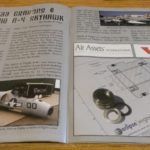Eclipse in Print

Thanks to our neighbors, Eclipse was given the opportunity to create our first ever print advertisement to be featured in the very first issue of Spirit of Flight Center Magazine. The Spirit of Flight Center is a local museum dedicated to the display of rare aviation artifacts. If you have a love for aviation and are in Colorado, it’s definitely something fun to see.
In our ad, we decided to feature a very simple image to outline exactly what we specialize in here at Eclipse. That focus was on custom designs for high tech applications, exactly to meet the needs of our customers. Hopefully you enjoy our ad, and don’t forget to stop by the museum and pick up your copy of the magazine!





